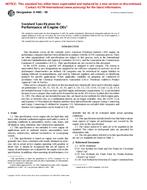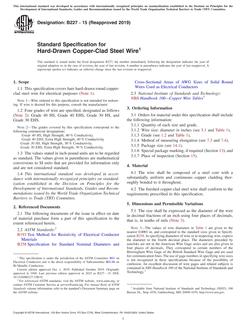1.1 This guide describes procedures for obtaining laboratory data concerning the adverse effects of a text material added to growth medium on a certain species of duckweed (Lemna gibba G3) during a 7-day exposure using the static technique. These procedures will probably be useful for conducting toxicity tests with other species of duckweed and other floating vascular plants, although modifications might be necessary.
1.2 Special needs or circumstances might also justify modification of this standard. Although using appropriate procedures is more important than following prescribed procedures, results of tests conducted using unusual procedures are not likely to be comparable to results of many other tests. Comparison of results obtained using modified and unmodified versions of these procedures might provide useful information concerning new concepts and procedures for conducting tests with duckweed.
1.3 The procedures in this guide are applicable to most chemicals, either individually or in formulations, commercial products, or known mixtures. With appropriate modifications these procedures can be used to conduct tests on temperature and pH and on such other materials as aqueous effluents (see also Guide E 1192), leachates, oils, particulate matter, sediments and surface waters. These procedures do not specifically address effluents because to date there is little experience using duckweeds in effluent testing and such tests may pose problems with acclimation of the test organisms to the receiving water. Static tests might not be applicable to materials that have a high oxygen demand, are highly volatile, are rapidly biologically or chemically transformed in aqueous solution, or are removed from test solutions in substantial quantities by the test chambers or organisms during the test.
1.4 Results of toxicity tests performed using the procedures in this guide should usually be reported in terms of the 7-day IC50 based on inhibition of growth. In some situations it might only be necessary to determine whether a specific concentration unacceptably affects the growth of the test species or whether the IC50 is above or below a specific concentration. Another end point that may be calculated is the no observed effect concentration (NOEC).
1.5 The sections of this guide appear as follows:
1.6 This standard does not purport to address all of the safety concerns, if any, associated with its use. It is the responsibility of the user of this standard to establish appropriate safety and health practices and to determine the applicability of regulatory limitations prior to use. Specific hazard statements are given in Section 6.
Product Details
- Published:
- 04/01/2004
- Number of Pages:
- 10
- File Size:
- 1 file , 110 KB


